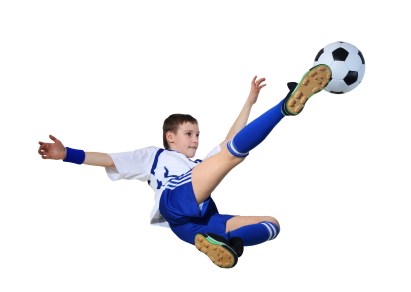 An youth athlete's natural flexibility varies by age. Athletes with poor muscle
flexibility experience more soreness, tenderness and pain after
exercise. The less flexible the muscle the more easily it can be injured. Use these simple tests to test flexibility of the major muscles and tendons
prone to injury in soccer.
An youth athlete's natural flexibility varies by age. Athletes with poor muscle
flexibility experience more soreness, tenderness and pain after
exercise. The less flexible the muscle the more easily it can be injured. Use these simple tests to test flexibility of the major muscles and tendons
prone to injury in soccer.
Flexibility varies by age
- Losing Flexibility: Children aged 10 and up start to lose flexibility because their bones are growing faster than their muscles.
- Gaining Flexibility: Around the age of 13 (for girls), and 14 (for boys), flexibility starts to improve again.
- Staying Flexible: It is therefore important for kids in sports to stay flexible between the ages of 10-13 when they have less natural flexibility.
Soccer doesn't develop flexibility
Unfortunately, soccer is not a sport like gymnastics or swimming that naturally develops flexibility. As a result, staying flexible is even more important for children playing soccer. The importance of stretching during warm-up before a practice or game, and during the cool-down after practice cannot be overemphasized.
Flexibility and injuries
An article in the American Journal of Sports Medicine (AJSM) found that athletes with poor muscle flexibility experience more soreness, tenderness and pain after exercise. The less flexible the muscle the more easily it sustains damage.
Another AJSM study suggests that the most common soccer injury linked to poor flexibility is a groin strain. This is obviously the area that has to be kept the most flexible.
Testing your child's flexibility
Here are some simple tests tailored for soccer that you can use to test your child's flexibility:
GROIN FLEXIBILITY
- While standing, have her spread her legs as wide apart as possible. If the angle between the legs is less than 90o she has low groin flexibility.
HIP FLEXIBILITY
- While lying on a table with one leg fully bent, have him hold one leg close to his chest, while lowering the other over the side of the table. If the thigh dips below the line of the table then he has good hip flexibility.
HAMSTRING FLEXIBILITY
- Again, while your child lies on a table with both legs straight, try to push one leg back as far as possible without causing any pain or discomfort to your child. Make sure the leg is kept straight. Your child has passed this flexibility test if the angle between the leg on the table and the one being pushed back is more than 90 degrees.
ANKLE (ACHILLES TENDON) FLEXIBILITY
- Have your child squat down with both feet about shoulder-width apart. She has good flexibility if she can do this with both heels touching the ground.
QUADRICEPS (FRONT OF THIGH) FLEXIBILITY
- While your child is lying down face-first on a table/couch, push her heel as far back up to the buttocks as possible without causing any pain/discomfort. A soccer player with good flexibility will be able to touch the heel to the buttocks.
Updated October 2, 2011








